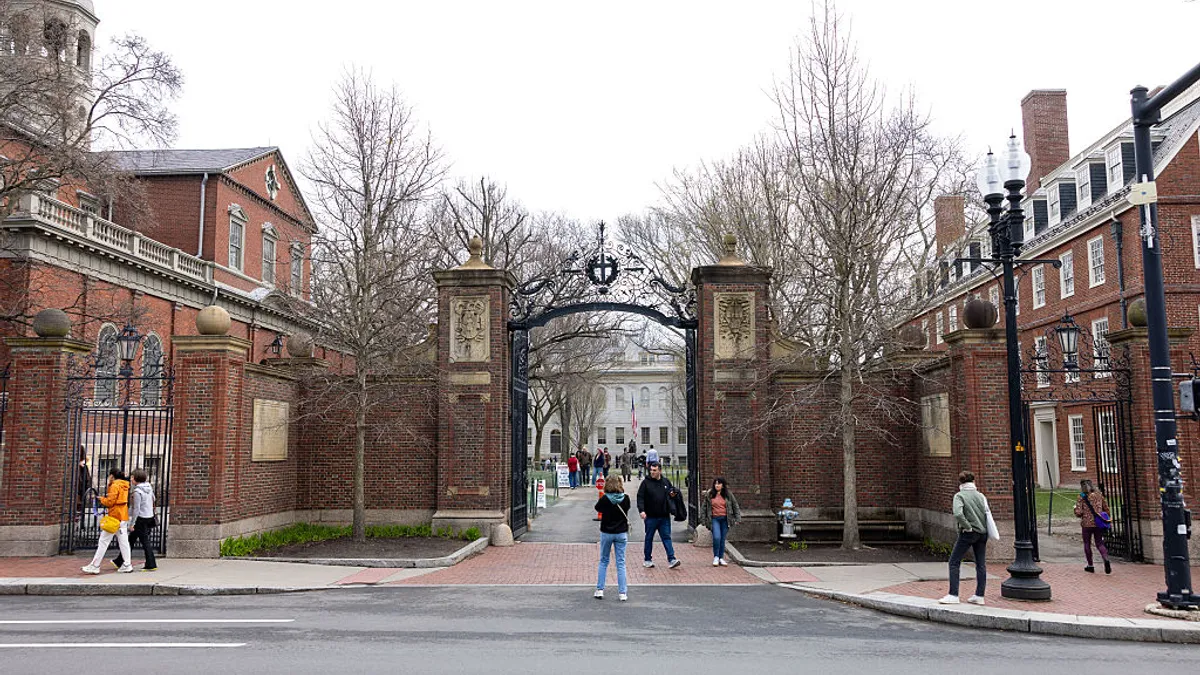When ITT Tech announced the doors of all of its more than 130 campuses nationwide would close, leaving over 35,000 students and 8,000 employees out in the cold, it sent a shock through the for-profit community.
The decision itself was not surprising to most. In recent weeks, the U.S. Department of Education has raised the holding company’s credit monitoring requirements, moved to shut down its accrediting body and, most recently, declared the institution ineligible to admit students who are accepting financial aid. The company had been struggling under the weight of the heightened federal scrutiny, and had just weeks ago announced its intent to enroll 60% fewer students, compounding a decline of 50% over the last six years.
For many, it was the timing of the decision that came as a surprise.
Steve Gunderson, who serves as president and CEO of for-profit advocacy organization Career Education Colleges and Universities, said the revocation of access to federal financial aid dollars, which ultimately led to the institution's closure, “could have been a process that could have occurred over an 18-month period,” rather than what was seen by some as an abrupt move by the U.S. Department of Education.
Gunderson, who served in Congress for 16 years, and as an elected official for a total of 22 before turning to the private sector, said the department’s targeting of for-profit institutions, and the swiftness of the process to close ITT specifically “unlike anything I’ve seen in all of my years working in or associated with the government of the United States,” and said “it’s indicative of what the sector are afraid of.”
“This sector believes this department will do as much as it can to to shut down as many schools as possible before [President Barack Obama] leaves office,” he said.
“The ACICS revocation [of accrediting authority] was really a strategy to eliminate accreditation for those schools which the department felt were low-performing schools,” he opined.
But former Deputy Director of the White House Domestic Policy Council James Kvaal said the move was neither as swift nor as sudden as many in the for-profit sector are making it out to be.
“These problems are not new news, they have been issues that have been going on for years now, and every week that goes by, more students are borrowing to attend ITT,” Kvaal said. While he contended the industry should not be surprised by the most recent developments, Kvaal said they “should give new urgency to for-profit colleges’ efforts to focus on the value that they are providing students.”
Still, as Gunderson pointed out, to force closure right before Labor Day, during the enrollment period, leaves many of the students and the employees of the institution with few options — but abundant questions and despair — at the start of the semester.
“Unfortunately, the department chose to go for the headline of closure, rather than a more complete and thoughtful process of working to transition those schools” to more stable leadership via acquisitions by other institutions.
A way ahead
Leaders of many other for-profit institutions are in distress, trying to process the news of the closures and what this could mean for their institutions, Gunderson said. Several had hoped to purchase ITT campuses across the country and continue their operations, he said.
But Kvaal, who left the White House in March and currently serves as a policymaker in residence at the University of Michigan, said the news should serve as a wake-up call to other institutions.
Kvaal said there are some for-profit institutions “doing an excellent job” of serving “the needs of working adults,” finding innovative ways “to help students earn their degrees quickly,” building “close ties to employers” to help serve the needs of industry and support the national while keeping “the costs of their programs down.”
“Those types of colleges can be good investments for students,” he said.
“What we need to do is to make sure that when colleges are doing well, it’s because their students are really doing well,” he said. “One thing that we looked at very intently is the impact of gainful employment on students.”
“There are institutions out there that are offering free trial periods or orientation periods, colleges that are shortening their programs … bottom line is they need to be focusing on the value that they’re offering students,” he said.
Part of that focus on value is a focus on outcomes, like job placement upon graduation, and metrics like retention and graduation against which all institutions receiving federal funds are measured, said Gunderson.
“It’s all about outcomes,” he said, noting schools must focus heavily on “student customer satisfaction.”
Servicing a difficult population
To achieve heightened levels of student customer satisfaction, Gunderson said, “the real focus has to be on a) student financial literacy, and b) student services for that student.”
“When you are dealing with a population that is 90% eligible for Federal financial aid, you’re dealing with a large low-income population. They have many challenges in life, and it is essential for that school to work with that student … as they deal with their personal challenges in day-to-day life. There’s a hundred different challenges in the life of this demographic that have to be considered if you’re trying to achieve the kinds of retention outcomes you’re trying to achieve,” Gunderson said.
Kvaal acknowledged “it is true that some students are harder for colleges to serve, but there are some colleges that are doing it.” But many fear the colleges doing it best — often historically black or Hispanic-serving institutions — may be next on the chopping block, given the department’s emphasis on these outcomes.
For his part, however, Kvaal believes the very missions of these institutions as nonprofit, versus for-profit, shield them from scrutiny under these precedents.
“There are some things that are different about for-profit colleges,” he said. “Congress made explicit the reason they made these colleges eligible for student loans, and that was to get students jobs. … That’s very easy to quantify.”
Not only that, he said, but “you have an intense profit motive, and some of these colleges had very, very large margins. They were taking 20- or 30% of revenue dollars as profit,” — while their students and graduates were not faring well.
Lessons learned
Gunderson said that for any for-profit institution facing scrutiny, “the first challenge here is that whether allegations against you are found to be valid or not, if the allegations are substantive, you’d better become concerned.”
And if Kvaal’s observations about profit margins are any indication, the institutions with the highest profit margins may have the greatest risk of targeting — so they’d better make sure their students are finding jobs upon graduation.
One key way to steer above the fray is to align directly with industry and corporate partners to provide continuing education and credentialing to adult learners who are already in the workforce.
And in the event that another shutdown is imminent, Gunderson said, “I think that we in higher ed need to take a lesson from the banking industry and the FDIC.” Instead of swift shut-downs without clear alternatives for affected students and staff, he said institutions and the federal government should work together to “orderly transition [institutional operations] to someone else with sound financial ability to provide [services] to that community.”




















